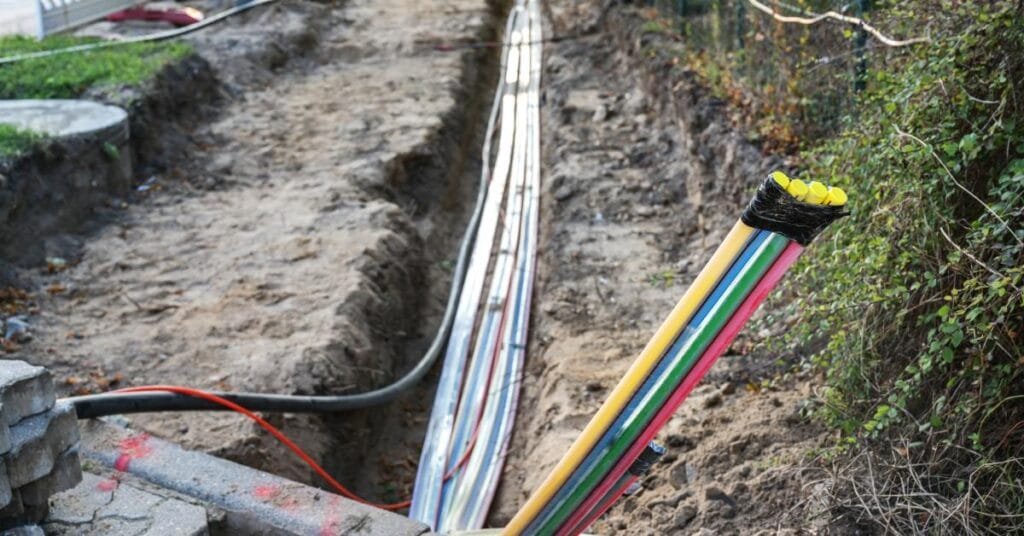Ever wonder how your internet gets from point A to point B at lightning speed? Underground fiber optic cables make it happen. These hair-thin strands of glass carry data at the speed of light, and getting them installed below ground is way more complex than you might think.
Whether you’re curious about the tech or considering a career in telecommunications, explore these cool things to know about fiber optic underground work and appreciate that lightning-fast streaming power.
It’s Not Just Digging a Trench
Installing fiber optic cables underground involves serious precision. Crews don’t just throw cables in the ground and call it a day. The process requires careful planning to avoid damaging existing utilities like water lines, gas pipes, and electrical systems.
Before any digging starts, technicians map out the entire route using ground-penetrating radar and utility locators. They identify obstacles, plan the path, and determine the best installation method. Sometimes that means trenching. Other times, it means using horizontal directional drilling (HDD) to bore underground without tearing up roads or landscapes.
The Cable Itself Is Basically Indestructible
Fiber optic cables might look delicate, but they’re built tough. Each cable contains multiple layers of protection:
- Glass Fibers: The core that transmits light signals.
- Buffer Coating: Protects the glass from moisture and physical damage.
- Strength Members: Usually made of aramid yarn (think Kevlar) to prevent stretching.
- Outer Jacket: A durable plastic layer that shields everything inside.
These cables can withstand extreme temperatures, moisture, and even rodent attacks. Some are armored with steel for extra protection in high-risk areas.
Pulling Cable Takes Serious Skill
Once the conduit is in place, crews pull the fiber optic cable through it. This step requires finesse because the glass fibers inside can break if you bend or stretch the cable too much.
Technicians use specialized equipment for feeding pull tape without fiber damage, ensuring the cable glides smoothly through the conduit. They monitor tension levels constantly and never exceed the manufacturer’s limits. One wrong move could ruin hundreds of feet of expensive cable.
Underground Fiber Lasts for Decades
Once installed, underground fiber optic cables can last 25 years or more with minimal maintenance. Unlike copper cables, they don’t corrode, and they’re immune to electromagnetic interference. That means your connection stays fast and reliable year after year.
Telecom companies mark the location of underground fiber routes so that future construction crews don’t accidentally damage them. Those “call before you dig” warnings exist for a good reason.
It Powers More Than Just Internet
Fiber optic cables don’t just bring you Netflix and TikTok. They’re the backbone of modern communication networks, supporting the following services:
- Mobile phone towers
- Medical imaging equipment
- Traffic management systems
- Security and surveillance networks
- Smart city infrastructure
Basically, if it needs to transmit data quickly and reliably, it probably runs on fiber optics.
Why It Matters
Underground fiber optic work keeps the digital world running at light speeds. Without skilled technicians installing and maintaining these networks, we wouldn’t have high-speed internet, 5G, or most of the tech we rely on daily.
If you’re into hands-on work with cutting-edge technology, this field offers solid career opportunities. Plus, you get to say you literally built the internet.
